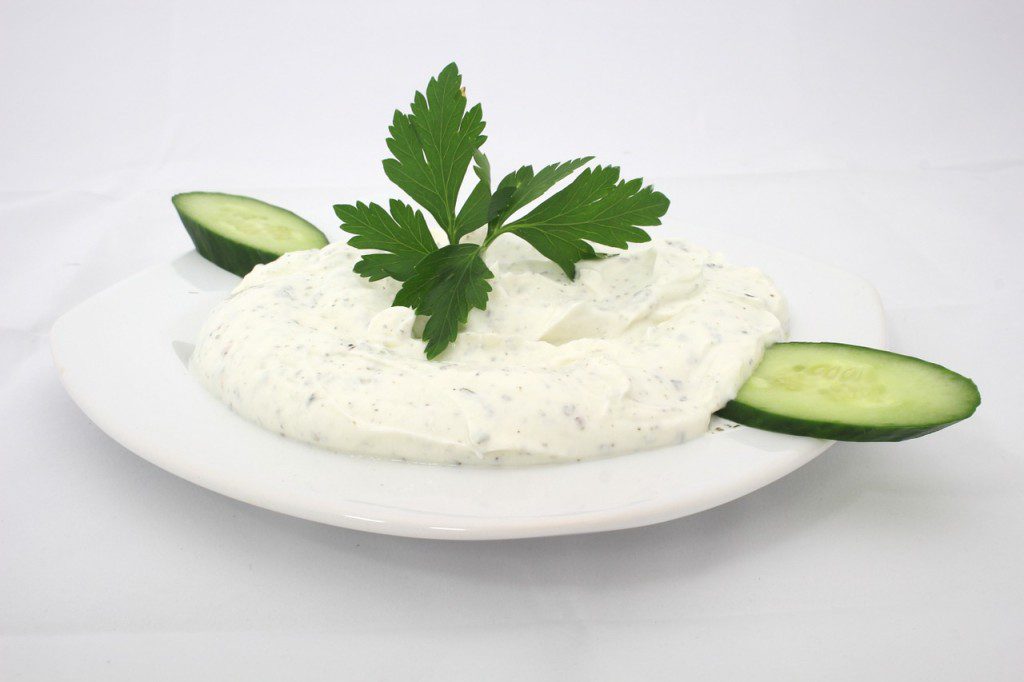3 Exotic Flavors to Spread on Your Bread While You’re in Israel
February 11th 2015
Hummus, the Middle Eastern delicacy made of blended chickpeas, has become so mainstream that the Huffington Post published the 10 Reasons Why We Should All Be Eating More Hummus.
Hummus may be getting all the attention, but here are three other exotic Israeli flavors to tickle your tongue when you come to town.
Fragrant, Spicy Paste
 Zhug (alternately spelled as skhug or zhoug) came to Israel through the hands of Yemenite Jewry when, in
Zhug (alternately spelled as skhug or zhoug) came to Israel through the hands of Yemenite Jewry when, in
1949-50, the newly declared State of Israel rescued 49,000 Yemenite Jews during Operation Magic Carpet. Zhug comes in various colors, depending on the chili pepper varieties and other ingredients included. Beyond chilis, the most common seasoning enhancements in zhug include salt, lemon, parsley, garlic, cumin and cinnamon.
At falafel and shwarma stands throughout the country, this favored condiment is often referred to simply as harif (“spicy”). Packaged zhug is available in grocery stores and is commonly served at Shabbat meals to be spread on challah.
When Bitter is Better
 The Yemenite Jews also introduced Israel to hilbeh, a frothy and slightly bitter spread. Besides serving as a dip for bread, locals often add a tablespoon or so of hilbeh to their chicken soup.
The Yemenite Jews also introduced Israel to hilbeh, a frothy and slightly bitter spread. Besides serving as a dip for bread, locals often add a tablespoon or so of hilbeh to their chicken soup.
Based on fenugreek seeds, hilbeh is considered a superfood thanks to multiple medicinal properties. These include blood sugar control and increased lactation for nursing mothers. Depending on the amount of tomato in the recipe, hilbeh can range from whitish green to deep red. Hilbeh is a staple in the Yemenite Jewish diet and is one of the ceremonial foods served on Rosh Hashanah. Hilbeh is served as a condiment at Yemenite-style restaurants and can also be purchased at spice stands in powder form.
Not Quite Yogurt, Not Quite Cheese
 At its most basic, labaneh is strained yogurt that’s spreadable. Around the Middle East, labaneh appears on tables in varieties that are distinct to the local communities. In Saudi Arabia, for example, it’s made from
At its most basic, labaneh is strained yogurt that’s spreadable. Around the Middle East, labaneh appears on tables in varieties that are distinct to the local communities. In Saudi Arabia, for example, it’s made from
camel milk. In Israel, sheep and goat milk is the more common source.
Slightly bitter, with a consistency somewhere between cheese and yogurt, the exact flavor tones of a given
batch of labaneh come primarily from the type of animal milk used as well as the quality of the olive oil drizzled on top. Small white balls of labaneh are submerged in olive oil and sold in glass jars, but it’s also sold at supermarkets as a spread packaged in tubs. Labaneh is perfect as a breakfast item with pita, fresh herbs, cut vegetables and a healthy bit of olive oil.
Diversify Your Palette
Visiting Israel makes for amazing opportunities of culinary discovery. We encourage you to go beyond hummus and enhance your fresh bread with one of these exotic Israeli flavors.











